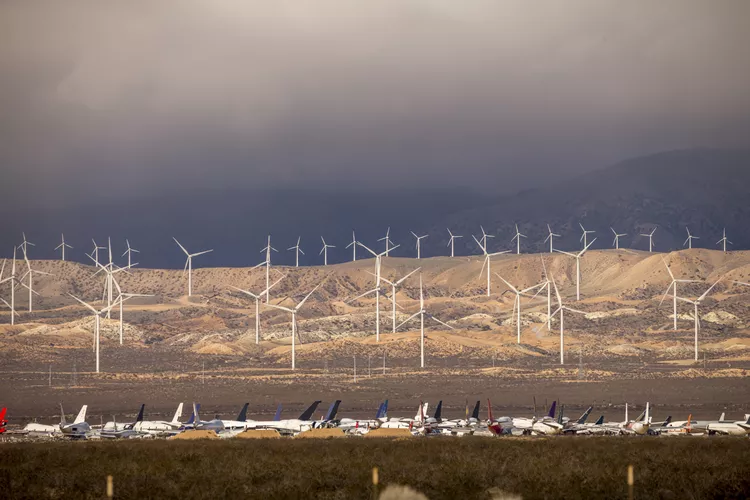Overview of Aircraft Boneyards
A Glimpse Into Aircraft Boneyards Across the U.S.
Aviation Geeks and Boneyards
Aviation enthusiasts often have a passion for visiting aircraft boneyards, which are locations in arid regions where airlines retire planes that have reached the end of their flying days. These boneyards, primarily found in states like Arizona and California, are ideal for preventing rust and deterioration due to the dry climate.
The most notable boneyards include the Mojave Air and Space Port in California, Phoenix Goodyear Airport, Inal Air Park in Marana, Arizona, and Southern California Logistics Airport in Victorville. Below, we delve into some of the significant aircraft currently residing in these unique locales.
Convair 880

This Convair 880 is one of 14 airframes retired from the fleets of TWA, Delta Air Lines, and Northeast Airlines. These aircraft found their final resting place in the boneyard within California’s Mojave Desert during the early 1980s. Many components were salvaged, with engines being converted for oil platform usage and parts fetched large sums on the market.
Boeing 747

The iconic Boeing 747s are currently parked in Ardmore, Oklahoma. Notably, the front 747SP served with Pan Am prior to its retirement. In total, Boeing proudly delivered 1,500 of these remarkable aircraft by June 2014.
Boeing 707

Located in Tucson, Arizona, the Davis-Monthan AFB Boneyard predominantly houses military aircraft, though commercial aircraft like the El Al Boeing 707 can also be found there. Launched in the 1950s, the 707 is credited with ushering in the jet age, with 856 units produced by Boeing through to 1994.
L-1011

In 2001, Delta Air Lines retired its Lockheed L-1011 fleet, splitting the aircraft between the Mojave Desert and Victorville, California. The Tri-Star received substantial service until its withdrawal, with parts used in various television productions, notably the series Lost.
Boeing 767-200

Doug Scroggins Aviation scrapped an American Airlines Boeing 767-200 following an engine incident during a ground run in 2007. This mid-1980s aircraft marked the end of its operational journey and is part of a broader initiative where various aircraft are salvaged for different purposes.
Douglas DC-3

This Douglas DC-3, nicknamed the “Mainline Reno,” resides at Evergreen Aviation in Marana, Arizona, which maintains a strict no-visitor policy. Developed in 1934 at the behest of American Airlines’ President C.R. Smith, this model was a pioneering effort in commercial aviation, with 607 units produced before production ended in 1942.
McDonnell Douglas DC-9

At Opa Locka Airport near Miami, several aircraft scrapping operations take place, including Air Tran’s retired fleet of DC-9-30s. These aircraft were phased out as maintenance checks grew due, making way for newer models such as the Boeing 717.
Boeing 737-200

Air Canada retired its fleet of Boeing 737-200s by 2004, followed by Southwest Airlines, which phased out its last of the series in January 2005. The 737, which debuted in 1965, broke records when it surpassed 10,000 orders by July 2012. Both retired aircraft models commonly found their way to the Mojave Desert boneyard, reflecting the diverse retired commercial aircraft landscape.





